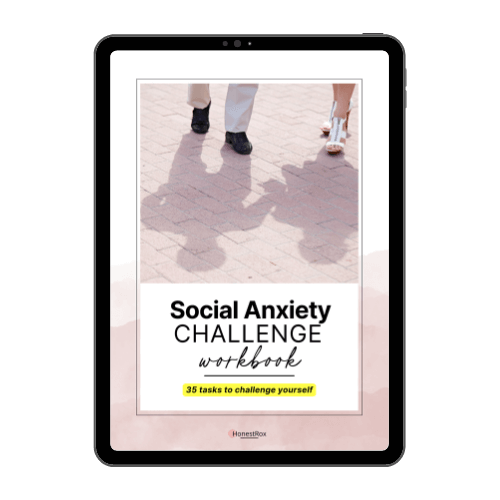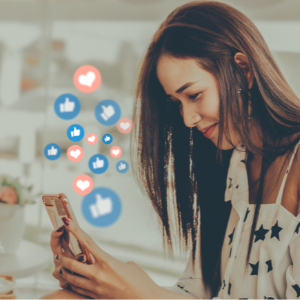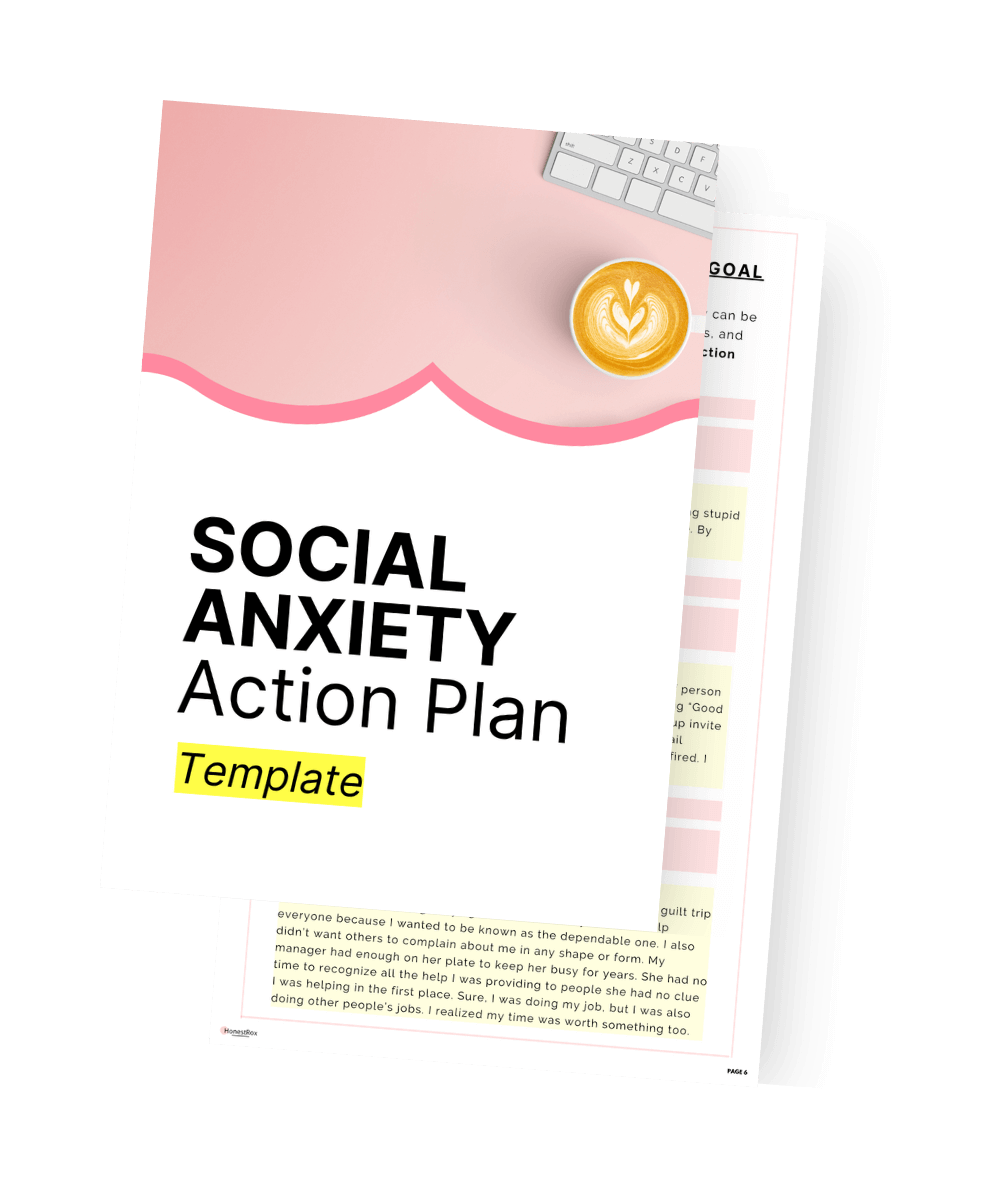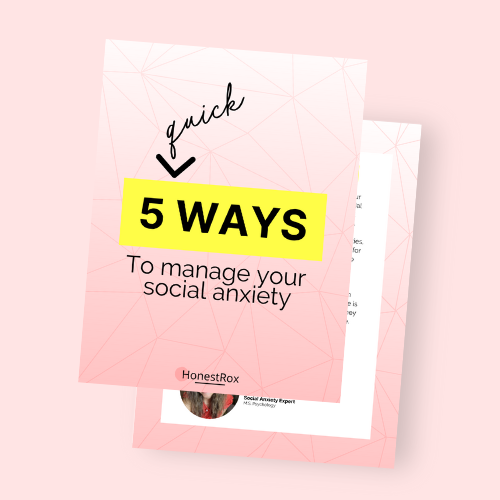
Social Anxiety
Have You Heard Of The Liking Gap? The Hidden Reason You Think People Don't Like You
Let’s break down 5 studies so that we can feel better about interacting with new people
The “Liking Gap” is an illusion that creates the mistaken belief that someone likes you less than they do.
Have you ever walked away from a conversation with someone new, thinking you tanked it? That there’s no way they’ll ever want to talk to you again?
Maybe because of something you said or didn’t say. Perhaps because they didn’t give you the feeling that they liked you in the first place?
Chances are you were a victim of the liking gap. Even if you haven’t heard of it, you’ve probably experienced this illusion.
Here’s one way to explain what the Liking Gap is.
Imagine you’re baking a cake and unsure if it will turn out well (for me, that’s 100% of the time). You’re worried that it might not be sweet enough or the texture might be off.
But when you serve the cake to your guests, they all love it.
Huh, why the disconnect? Are they lying to us about the damn cake? How dare they!
But, this is similar to the liking gap in social interactions – we often underestimate how much others like us, just as we might underestimate how much people enjoy our cake.
Like the cake, we might be worried that we’re not doing well socially, but others may see us more positively than we think.
Now I know what you’ll say: They’re just saying that about my cake to be nice.
Sure, that’s a possibility. Let’s reframe it, then.
Think of a time when you were the one being served cake, and you found it delicious!
Chances are the person who made it was also worried about its taste. Maybe they even mentioned how worried they were or breathed a sigh of relief when you said it was delicious.
My dad is very critical of his cooking and always asks 10 times if it’s good enough once it’s served, yet I always look forward the most to his dishes.
To set the stage up, I want to highlight the “Liking Gap” to make you feel more comfortable meeting new people.
We’re so reluctant to talk to strangers or with the person sitting next to us in class because we worry they won’t like us or find us interesting enough.
But what if the truth is on the other side? What if you knew that the chances were SUPER HIGH that the person DOES find you interesting?
Yes, having a conversation with a stranger or a new person is quite unnerving, especially if you have social anxiety, as it can be awkward and uncertain.
“Did I overshare? Talk too much? Was I boring?”
It’s impossible to know exactly what the other person thinks of you, so given that blind spot, you’re going to take a guess.
And since you’re in your head, your guess will be negatively biased and self-critical. Ugh, those stupid brains of ours.
And since you’re the best at being your worst critic, you will find it hard to believe others don’t see you the same way. There’s the illusion!
The gap between what you think of yourself during a conversation and what someone else thinks of you is so big that you will underestimate how much they like you and overestimate how harshly they feel about you.
The Liking Gap exists because we can’t just ask people how much they like us after a conversation ends – how awkward would that be…
But the truth is, if you ask someone how much they like you, they will probably give you two thumbs up.
Studies show that after people have conversations, they are liked more than they think. I find that quite reassuring, knowing I have science backing me up in a conversation with a stranger, don’t you?
Let’s dig more into the data. Researchers conducted five studies to explore this illusion we fall prey to.
Study 1a was to answer the question: Is there a liking gap?
Participants were recruited and asked to have a conversation with each other. They sat face to face at a table, were given some ice-breaker questions to help guide the conversation, and were recorded for the duration.
After the conversation, they were asked to rate how much they liked their conversation partner and how much they thought their partner liked them. The answers were based on a scale of 1-7 (show picture of scale), and they had to agree or disagree with several statements such as:
- “I generally liked the other participant.”;
- “I would be interested in getting to know the other participant better.”;
- “If given the chance, I would like to interact with the other participant again.”
And so on.
After a long of mumbo-jumbo statistics that I’m not going to break down because, holy moly, I did enough of that during my Masters’s degree and hated it.
The final call was that even after a short encounter with someone (aka small talk) people significantly underestimated how much others liked them.
Now they also added shyness to the mix. Highly shy participants reported a larger liking gap, while those with low shyness did not report a significant gap.
Huh? What gives with the non-shy folks?
Does that have to do with confidence? They’re not sure, but it does explain why some people find it so easy to talk to just about anybody without tripping up or thinking poorly of themselves and that the whole world hates them.
Study #1b answers the question: Do people send signals that they like each other?
You can probably think of a few times that you signaled to someone that you wanted to be friends with them, but they never really reciprocated, making you feel like they wanted nothing to do with you.
Chances are that they ignored your signal.
When we communicate with each other, we send a lot of signals through words, gestures, and facial expressions. Yet, for some reason, we miss many of those.
Well, that’s not true; it’s not SOME reason.
It’s for THIS reason: We tend to focus so much on our own performance and thoughts about our performance that we pay no attention to the person in front of us.
For all we know, they could literally be saying, “I like you,” or “I think you’re cool,” and you’d gloss over it because you’re too busy being mean to yourself.
But we’ll get to this in study #2.
Back to the original question: Do people send signals that they like each other? The researchers separated the signals into two buckets:
- The no-signal bucket is when you can’t tell if someone likes you because they don’t give you any signals (even though they like you). Think of someone that might be more restrained, shy, and socially awkward.
- The neglected-signal bucket is when you give out many signals and even offer to share your number with someone, but they do nothing. You’ll probably feel rejected when they don’t interpret your signal.
The researchers can only truly measure based on the neglected-signal bucket since they cannot know whether one participant liked another if they showed no signals, right?
And that’s where the liking-gap lives: in the neglected-signal bucket. Because the participants DID signal that they liked one another, but their ratings showed otherwise.
When rating how much their conversation partners liked them, they didn’t consider the signals.
So how did the researchers observe these so-called signals that we all seem to ignore in our conversations?
They had trained coders watch the recorded conversations and rate the participants’ Liking for each other.
What this means is that they had trained research assistants that were unaware of the study’s purpose, watch the recorded conversations and answer questions such as:
- “How much do they like the other participant?”
- “How much would they like to interact with the other participant again?”
- “How interested are they in getting to know the other participant?”
Sounds fun; I’d love to do that!
The answers were recompiled against the 7-point scale. The analysis showed that observed Liking was a significant predictor of actual Liking. In layman’s terms, the coders could accurately predict how much participants reported liking one another.
So, if someone is having a conversation with a stranger, they would pick up on signals and predict whether or not we are interested in each other.
Which brings us to the crux of the issue: why are we so bad at judging how others feel about us if chances are that they think rather highly? In the context of talking to someone new.

Time to challenge your social anxiety
Use Progressive Exposure Therapy to get you out of your comfort zone (in baby steps!). This Social Anxiety Challenge workbook comes with 35 tasks, each one with 3 different levels, and a reflection page.
Study #2 gives us an answer by asking the question: Why does the liking gap exist?
Why, oh why, can’t we all be friends like we want to be and stop overthinking that nobody likes us?!
So, although people give us signals that they like us during a conversation, we neglect these signals when it comes to rating how much they like us, and this has something to do with the fact that we’re too busy with our inner critic to catch the signals.
Which is what they set out to prove.
For this round, they placed the participants at the table again but did not give them any pre-determined ice-breaker questions (like in study #1a).
They let them have a natural conversation for about 5 minutes.
After the conversation, the participants rated each other with the same questions and scale as the first study, but they were also asked to share their post-conversation thoughts.
Write down something memorable about the other person. Something that stuck out to them. And to also write down what they think the other person would say was memorable about them.
These were the two questions they had to respond to:
- “What are the top 3 moments from your conversation that caused you to form the impression of the other person that you did?”
- “What are the top 3 moments from your conversation that caused the other person to form the impression of you that he/she did?”
They were asked to write in detail about each moment and then to rate each moment negativity or positivity on a 7-point scale whose endpoints were labelled extremely negative and extremely positive.
This helped the researchers test whether the negativity of people’s post-conversation thoughts was related to the size of the Liking Gap.
They call this the “thought valence.” “Thought valence” refers to the positivity or negativity of a person’s thoughts and how it influences the other two variables: rating type (actual or perceived liking) and the liking between conversation partners.
Yes, the jargon is in the way, I know. Stick with me here.
As a result, they found a significant effect, where “thought valence” (our positive/negative thoughts) plays a role in determining how much participants liked one another after their conversation.
The difference between actual and perceived Liking might be due to the positivity or negativity of their thoughts during the interaction.
Phew, mouthful. They were trying to measure whether people’s post-conversation negative thoughts were related to the size of the liking gap.
The stronger the negativity → the stronger the liking gap. Which is what they found to be the case.
Study #3 asked whether the liking gap persists in longer conversations.
Moving on from the small talk – does the illusion follow us in longer conversations?
For this study, they had participants talk for as long as they wanted within time constraints (longer than a minute but less than 45 minutes).
They even measured an Enjoyment Gap (how much someone enjoyed a conversation and how much they think the other person enjoyed it).
After their conversation ended, they went into separate rooms and answered the following questions, based on the 7-point scale again:
- “How much do you generally like the other person?”
- “How much did you enjoy the conversation?”
- “How much do you think the other person generally likes you?”
- “How much do you think your partner enjoyed the conversation?”
Overall, conversations lasted anywhere from two to 45 minutes. As it turned out, the rating type (actual or perceived) significantly predicted liking, again showing that we underestimated how much others liked us.
What do you think the results showed in the Enjoyment Gap?
If you guessed that participants mistakenly believed they enjoyed the conversation more than the other person, you’re right, my friend!
They even grouped the conversations into three buckets to see if there were any additional observations to be made and if the liking gap persisted across them:
- Short conversations
- Medium conversations
- Long conversations
The liking gap pattern (and the Enjoyment Gap) were similar for short, medium, and long conversations.
You can see it in this graph right here.
For each conversation instance, the perceived liking bar is below the actual liking bar.
This shows that no matter the length of the conversation, participants rated themselves as being less liked than the rate their conversational partners gave.
Ta-da, the illusion lives on!
Participants who had longer conversations reported greater enjoyment, but regardless of conversation length, they still underestimated how much their conversation partners enjoyed it.
Now comes the most interesting outcome.
The first four studies we just discussed were based in a laboratory setting where they had participants come in for the purpose of the study (even though they didn’t know what was being measured).
This next study takes it to the real-world level.
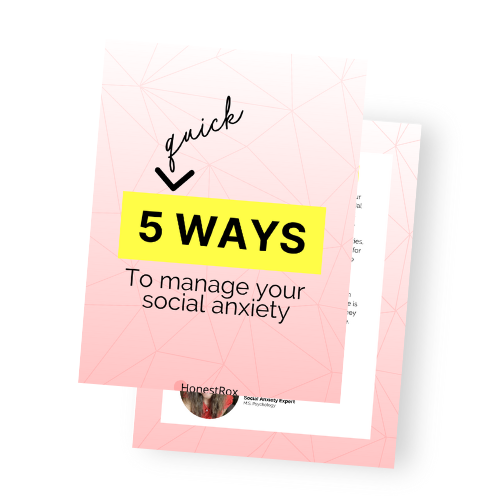
5 Quick Ways To Manage Your Social Anxiety
There’s no substitute for effort, but you can speed up the process if you understand and take these 5 ways seriously. This is your starter pack; what you do with it is up to you.
Study #4 asks: Can the liking gap be observed in the real world?
Dun dun dun, there’s nowhere to run anymore if the liking gap persists here.
They wanted to find out whether the Liking Gap exists in the general public, so they had people do their ratings after a How to Talk to Strangers workshop.
What they had to do was the following:
- Fill out a pre-conversation survey regarding their expectations for the workshop
- Find a conversation partner whom they did not previously know
- Spend approximately 5 mins introducing themselves.
- Complete a post-conversation survey.
During the workshop, the researchers asked people how interesting they found their conversation partner and how interesting they thought their conversation partner found them.
Similar to all the other studies.
They asked the question before and after their initial conversation with their partner.
The “before” question was something like “How interesting do you think this person will be” and the “after” question was something like “How interesting was that person.”
And also, of course, to rate what they think the other person would say about them is interesting.
I think you know where this is going.
As it turned out, from the 100 people there, the participants predicted that both they and their conversation partner would be less interesting than they and their conversation partner were.
This tells us that a conversation with a stranger, it seems, is better than you think it will be.
You can again see in the graph that the perceived rating was lower than the actual rating, signifying the liking gap.
Finally, in the last study, #5, they wanted to know whether the liking gap lasts.
Or if, at some point, we start seeing this illusion for what it is.
I won’t go too in-depth with this one, but they assessed participants at various times (these were roommates in college) to see the extent of the Liking Gap and found that it persisted for several months as they formed and developed new relationships.
As you can see in the graph, people underestimated how much their roommates liked them at all time points except for the final one.
So there is a Liking Gap between September and February, but then it disappears in May.
That may be due to people getting to know one another well by that time or because the students were deciding whether to live together the following year, which may have forced discussions that revealed liking, or both.
So the gap closed.
Overall, the main message from these studies is that “others like us more than we know.” or than we think we know.
While you digest all of that, I want to bring up a few reasons for the liking gap’s existence:
- Self-criticism: We tend to focus on our flaws and mistakes during conversations. We are more critical of our performance than an observer would be, as we saw with the coders. This is also called the spotlight effect.
- Differences in perspective: While we are aware of our thoughts and feelings during a conversation, we have no clue about the thoughts and feelings of the person we’re talking to. This can lead us to make assumptions, misread, and misjudge the interaction.
- Fear of rejection: We tend to fear rejection and disapproval from others, making ourselves small so we downplay any positive points during a conversation. This leads us to underestimate how liked we are.
- Safeguarding our reputation: The Liking Gap shows up around age 5 when kids become more concerned with how others see them and grows stronger with age. Once they start caring about their “reputation,” the Liking Gap appears.
Now that we’ve gone through the definition, the studies, and the evidence for the Liking Gap, you’re more aware of your tendency to underestimate yourself when talking to someone new.
I hope this helps you put things into perspective so you’re less harsh on yourself and more open to the signals sent your way.
Because if you’re consistently underestimating yourself in a conversation, you’ll run into self-doubt, lower self-esteem, and missed opportunities to connect with others meaningfully.
And that’s a shame, isn’t it? Because you’re worth knowing.
If you haven’t heard of the “liking gap,” get ready to have your mind blown. It’s probably why you think the person you’re talking to isn’t enjoying the conversation.
In this article, I break down 5 studies that answer the following questions:
- Is there a liking gap?
- Do people send signals that they like each other?
- Why does the liking gap exist?
- Does the liking gap persist in longer conversations?
- Can the liking gap be observed in the real world?
- Does the liking gap persist over time?

I'm Roxana

I went from being scared to ask a question out loud to hosting summits online. I love coffee, french crepes, and working from home. My mission? Help others build their social confidence to make friends, have conversations, and be comfortable around people!
Did you find value in my content? Support me by clicking the button!
Recent blog posts
Latest Episode

About the blogger
I'm Roxana Alexandru
As a social anxiety expert I share my best strategies and tips that I’ve learned on my journey to help you manage your social anxiety.
Like what you see here?
Check out the blog!
Must Reads
Grab these freebies
Free Challenge
5 tasks. 3 difficulty levels. Test your social anxiety through exposure therapy.
Grab these freebies
Free Template
Get the template that I personally used and create your own steps for your journey.
A podcast meant to help you be comfortably you, no matter the situation. My goal is to give you the confidence to go out into the world, share your worth, build meaningful relationships, and see yourself as highly capable. It all starts with being your awkward self comfortably.
Awkward together
The “Be socially confident” newsletter drops weekly to inspire, entertain, motivate, and educate you about social anxiety (who knew it could be so much fun?!). Honestly, if anything, you’ll get a kick out of my own experiences and the funny GIFs.

Call me Rox!
I’m obsessed with social anxiety. In a healthy way! After a decade of being debilitated by it, I finally have the tools I need to manage it (the journey itself is no joke). I now use my experience to help others.

